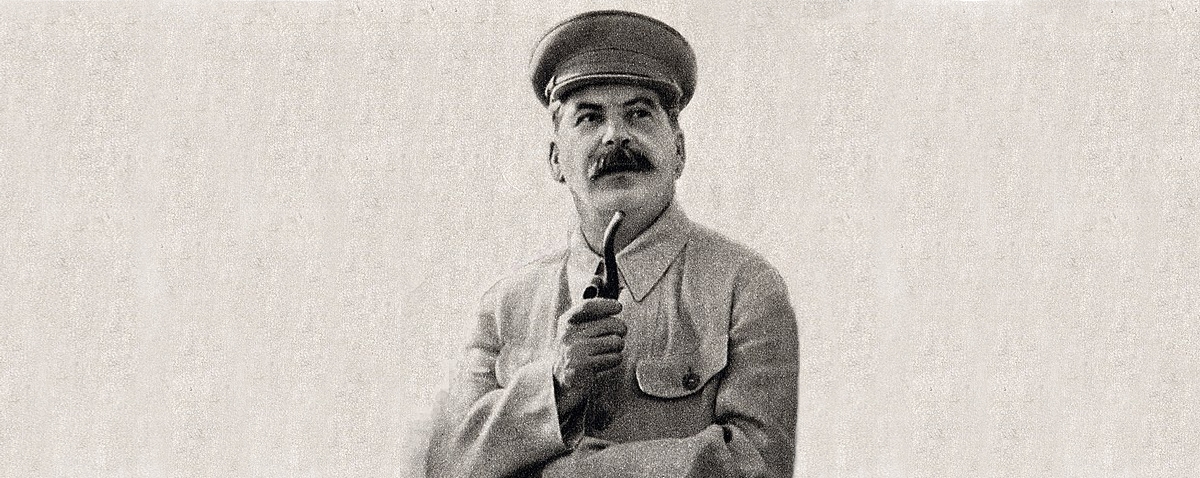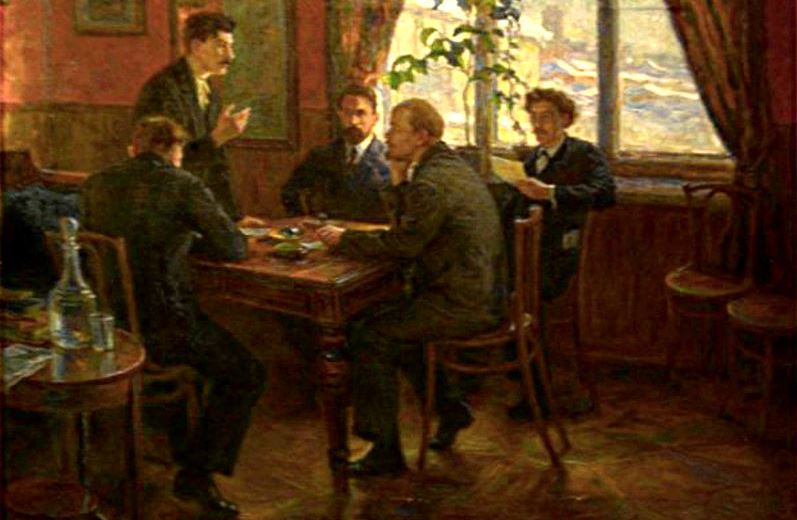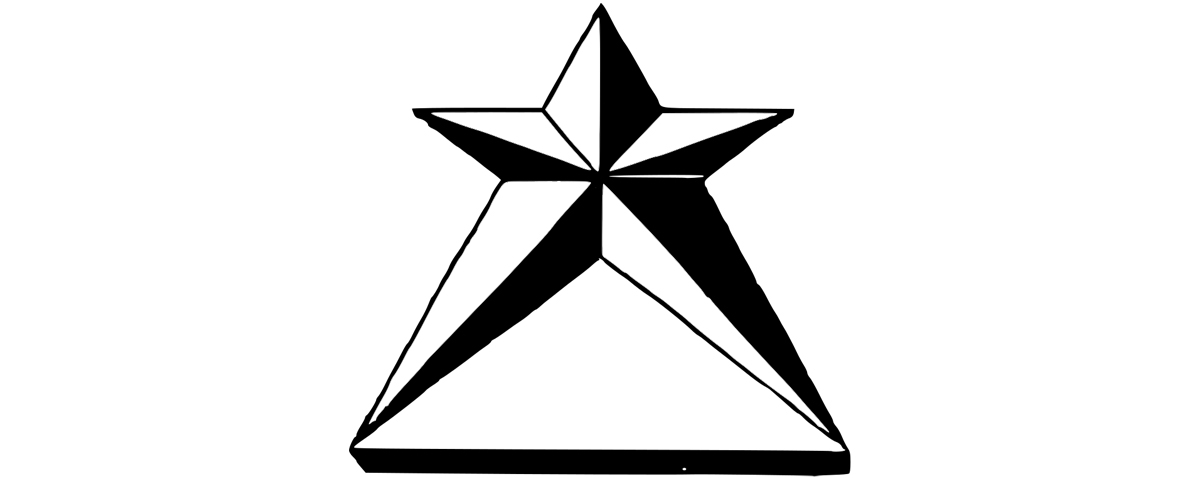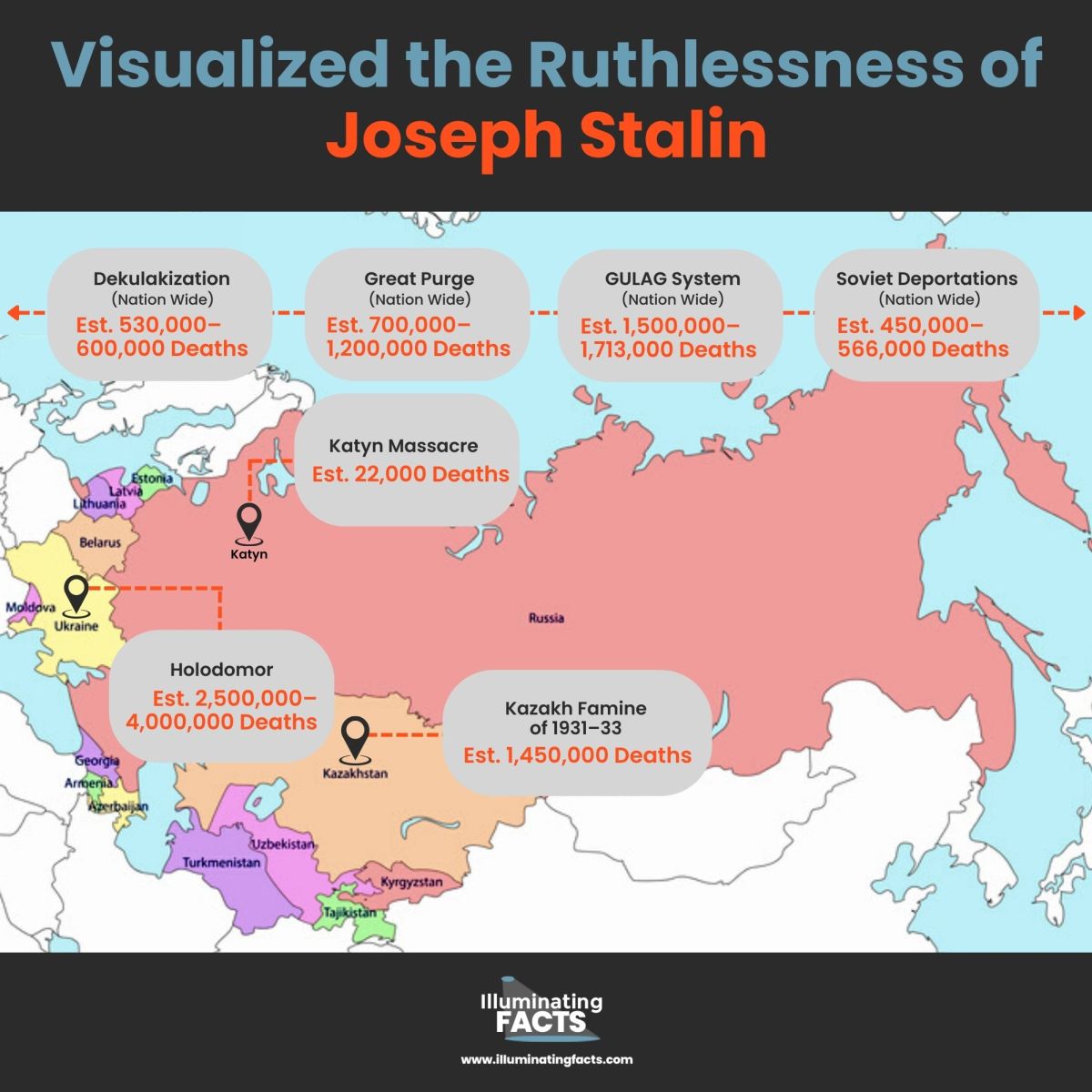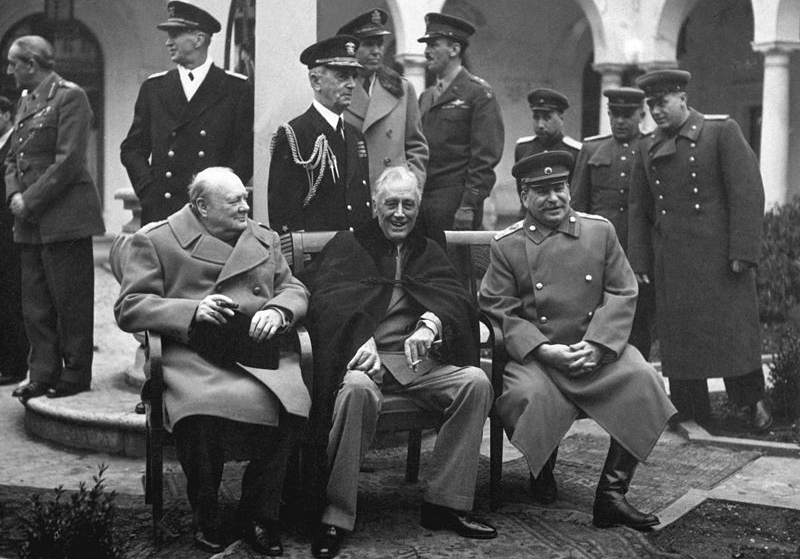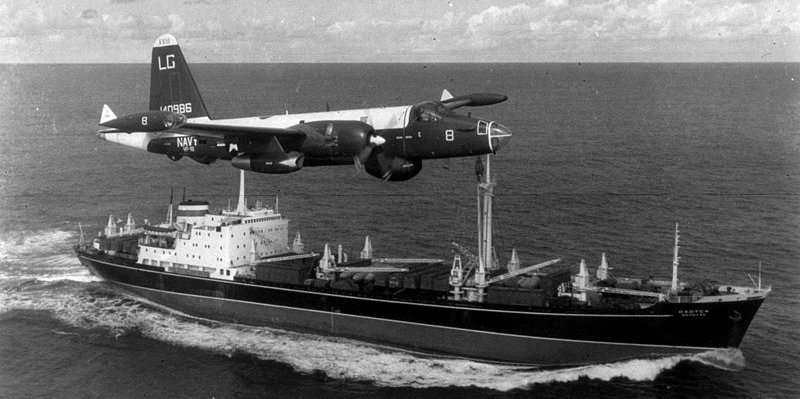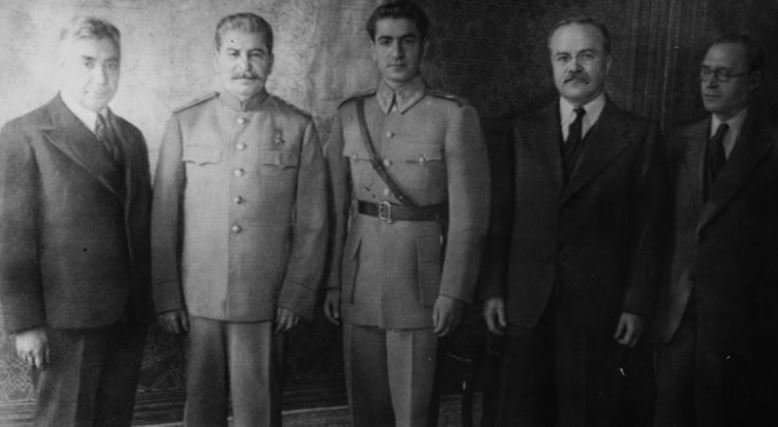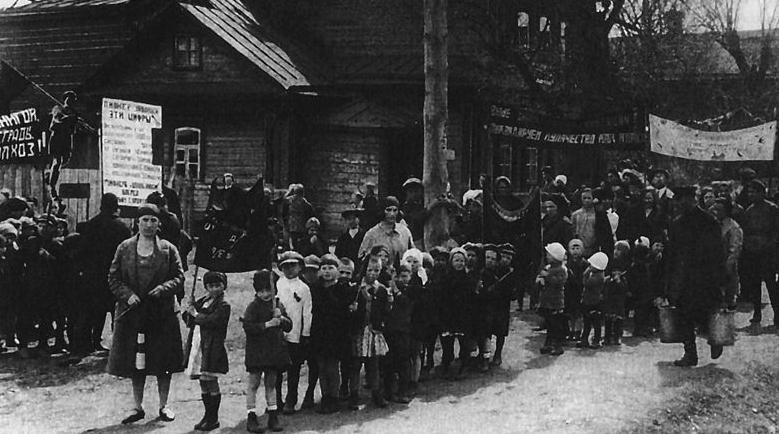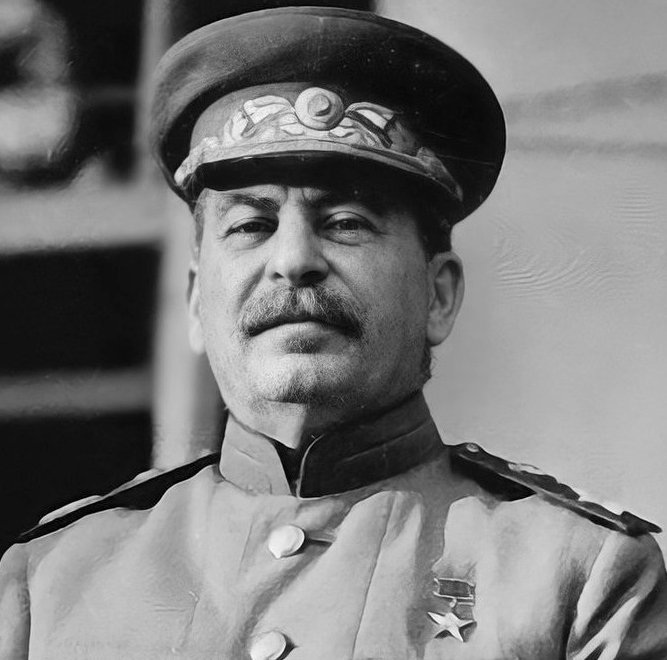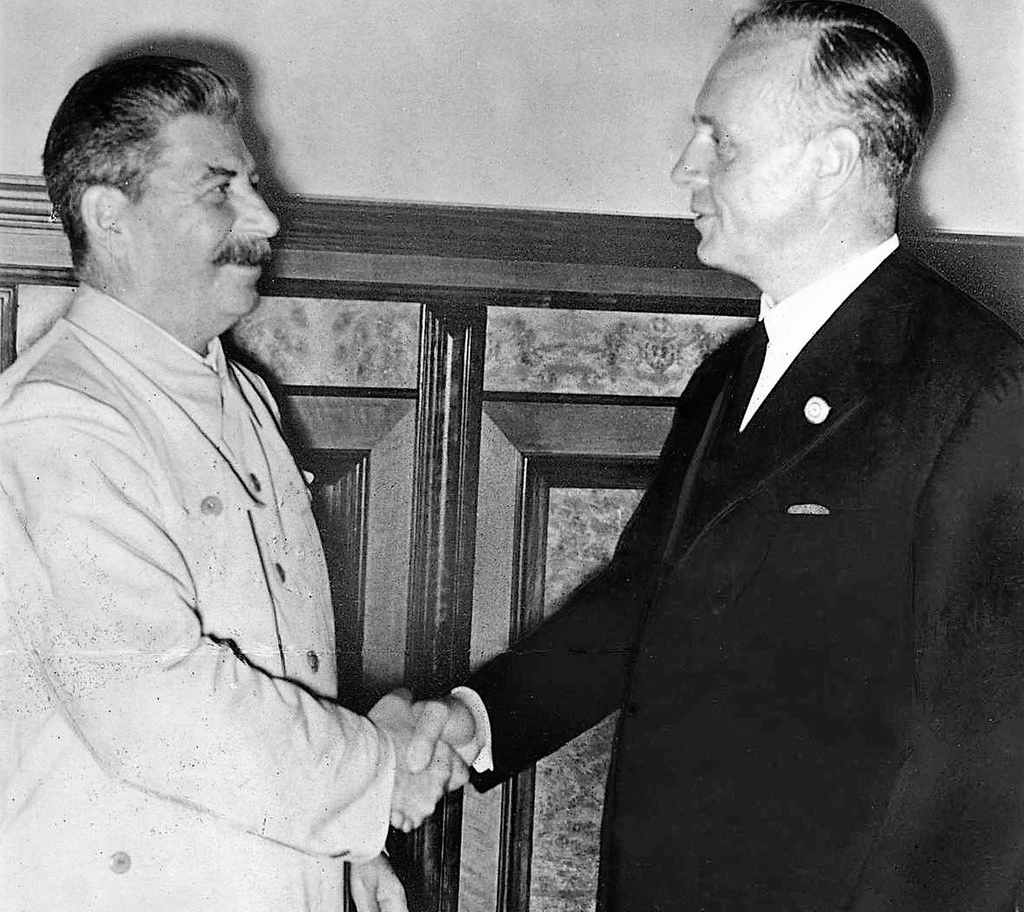Stalin was an influential figure who played a key role in the Bolshevik Revolution from 1917 to 1921, rising to power as Russia’s General Secretary of the Communist Party and becoming a Soviet dictator after Vladimir Lenin’s death. He had ruled the lives of Soviet citizens for 30 years by 1953. [1]
Nonetheless, many saw him as the Great Leader who’d revolutionized the country, defeated Fascism, and elevated the USSR to world power status. On the other hand, many others remembered the terror and feared confronting Stalin even after his death. Within this article, you can learn about this ruthless dictator.
Joseph Stalin: A Ruthless Communist Leader
From 1929 to 1953, Joseph Stalin was the Union of Soviet Socialist Republics (USSR) dictator. Under Stalin, the Soviet Union was converted from a peasant society to a military and industrial superpower. However, he ruled through terror, and millions of his citizens died due to his atrocities.
Stalin, who was born into poverty, became entangled in revolutionary politics and criminal activities as a young man. Stalin married a devout Georgian girl, Ekaterina Svanidze, around 1904. She died after three years, leaving Jacob, a son his father despised, calling him a weakling after a failed suicide attempt in the late 20s. When the Germans captured his son, Stalin turned down a German deal to exchange him. [3]
Stalin married his second wife, Nadezhda Alliluyeva, in 1918. However, she died of bullet wounds on a November night in 1932. Mikhail Shatrov, a playwright, suggested that Stalin drove her to commit suicide after she spoke out against the famine and Communist Party purges but was met with a barrage of vulgar abuse from Stalin.
Following the death of Bolshevik leader Vladimir Lenin, Stalin outmaneuvered his rivals for control of the party. Once in power, he executed or imprisoned potential enemies and collectivized farming. The disruption caused by the latter and the peasant’s resistance significantly contributed to the Great Famine of 1932–33.
During World War II (1939-1945), Stalin allied with Britain and the United States but afterward participated in the Cold War. (1946-1991). Following his death, the Soviets began a de-Stalinization process. [2]
Joseph Stalin’s Rise to Power
In 1912, Lenin assigned Joseph Stalin to the Bolshevik Party’s first Central Committee while in exile in Switzerland. The Bolsheviks took power in November 1917 in Russia three years later.
Stalin disobeyed the ailing Lenin’s wishes from 1921 onwards until, a year before his passing, Lenin authored a political “testament,” which has since been widely publicized, calling for Stalin’s secretary generalship removal. Coming from Lenin, the document could potentially ruin Stalin’s career, but his skill and luck allowed him to have it discounted throughout his lifetime.
The Soviet Union was established in 1922, with Vladimir Lenin as its first leader. During these years, Stalin rose through the party ranks, and in 1922 he was appointed secretary general of the Communist Party’s Central Committee. This position allowed him to elect his allies to government positions and build a political base. [3]
By the late 20s, Stalin had risen to the position of dictator of the Soviet Union. [2]
Europe During Stalin’s Rule
In the endless wastelands of the Gulag camps, Stalin’s regime killed far more people (tens of millions) than what scholar’s initially claimed. [4] Mass murder in the Soviet Union occasionally involved motivations, particularly ethnic and national ones, that are unsettlingly similar to Nazi rationale.
Let’s look at the number of lives lost under Stalin’s rule.
The GULAG System
Lenin established the GULAG (Main Administration of Collective Labor Camps) network of forced labor camps and prisons throughout the Soviet Union. But it was Stalin who used them for the most heinous purposes. The camps, like prisons worldwide, housed different convicts, including petty criminals and political prisoners.
The Gulag population peaked in the early 1950s with approximately 2.5 million inmates; 12-14 million people passed through the system’s gates between 1934-1944 alone, and over 1.5 million people were killed in the Gulag between 1930-1956. [10]
The GULAG had nearly 500 camps at one point. More people have gone through the GULAG system for much longer than were imprisoned in Nazi Germany’s concentration camps during their entire existence. [5]
The Great Famine
Approximately 14.5 million people died from starvation during the Great Famine of 1932-33, also known as the Holodomor. Estimates for the number vary greatly, but it is widely agreed that millions died — Kazakhstan and Ukraine were particularly hard hit. Unlike other famines caused by drought, Stalin’s policies on industrialization, away from small agricultural food production, led to this disaster. [5]
The Great Purge
Stalin launched “The Great Purge” in 1936, intending to rid the Communist Party of many of his most vexing critics and rivals. Hundreds of thousands of people were initially detained by Stalin’s NKVD (the People’s Commissariat for Internal Affairs or the secret police). Many were detained or executed at GULAG. Eighty-one of the Communist Party’s 103 highest-ranking members were executed. [5]
Eventually, over a third of the Communist Party was killed during The Great Purge, which also terrorized the general population. [5] Although estimates differ, most experts believe that at least 750,000 individuals were massacred during the Great Purge between 1936 and 1938. [9]
The deaths Stalin caused did not end there. Examine this table below for an estimate of the number of deaths in various tragic incidents.
Number of people killed by Stalinism from 1924 to 1953 (*excluding killings outside Soviet borders) [6]
| Event | Description | Est. Number of Deaths |
| Dekulakization | Dekulakization was the Soviet’s campaign of political repression that resulted in the deportation, arrest, or execution of millions of kulaks (affluent peasants) and their families. | 530,000–600,000 |
| Great Purge | The Great Purge, dubbed the Great Terror, was characterized by extreme persecution and oppression. The Great Purge is marked by the imprisonment and execution of not only usual suspects but also members of the Red Army, party members, Communist leaders, and members of the Intelligentsia in large numbers. | 700,000–1,200,000 |
| GULAG System | The Gulag was a forced labor camp system established during Stalin’s long reign as the Soviet Union’s dictator. The acronym “GULAG” stands for Glavnoe Upravlenie Lagerei, which translates to “Main Camp Administration.” | 1,500,000–1,713,000 |
| Soviet Deportations | During WWII, particularly in 1943-44, the Soviet government sent several deportations. Deportations to Central Asian republics and Siberia totaled 1.9 million people. The official reasons for these deportations were treasonous cooperation with the anti-Soviet rebellion and the invading Germans. | 450,000–566,000 |
| Katyn Massacre | The Katyn massacre was an array of mass executions of almost 22,000 intelligentsia prisoners of war and Polish military officers carried out in April and May 1940 by the Soviet Union, specifically the NKVD. | 22,000 |
| Holodomor | The Holodomor, also called the Great Famine or the Terror-Famine was Soviet Ukraine’s man-made famine that killed millions of Ukrainians between 1932 and 1933. The Holodomor was part of the bigger Soviet famine of 1932-1933, which affected the country’s major grain-producing areas. | 2,500,000–4,000,000 |
| Kazakh Famine of 1931–33 | The Kazakh famine of 1930-1933, also recognized as the Kazakh catastrophe, was a famine that killed roughly 1.5 million people in the Kazakh Autonomous Socialist Soviet Republic, which was then part of the Soviet Union’s Russian Socialist Federative Soviet Republic—1.3 million of whom were ethnic Kazakhs. | 1,450,000 |
| Total | ~7,231,000–9,551,000 |
The Role of Stalin in World War II and Order No. 227
German dictator Adolf Hitler and Joseph Stalin signed the German-Soviet Nonaggression Pact in 1939, on World War II’s eve. Stalin then annexed parts of Romania, Poland, and the Baltic states of Latvia, Estonia, and Lithuania. [2]
Then Germany violated the Nazi-Soviet pact in June 1941 by invading the Soviet Union, making major early inroads. Stalin had ignored warnings from British intelligence agents and Americans, along with his intelligence agents, about an impending invasion, and the Soviets were unprepared for war.
The German blitzkrieg that swept deep into Soviet territory following Hitler’s unprovoked assault on the Soviet Union exposed Stalin’s prewar countermeasures as ineffective. Stalin was temporarily stunned into inactivity by the onslaught, but he quickly rallied and ordained himself as supreme commander in chief.
As German troops neared the Soviet capital of Moscow, Stalin remained and implemented a scorched earth defensive strategy, destroying any infrastructure or supplies that could aid the enemy. The Red Army conquered the Germans and drove them out of Russia during the Battle of Stalingrad, from August 1942 to February the next year. The Soviet Army won the Battle of Kursk (in the summer of 1943) under Stalin’s supreme command, reversing the tide of invasion against the Germans, who retreated and capitulated in May 1945.
A Russian Ministry of Defense report from 1993 detailed military casualties during WWII. Their sources were secret Soviet field reports and other archive documents from the Soviet era.
Historians frequently cite Krivosheev’s study of the Soviet casualties and combat losses in the 20th century, which estimates the number of Soviet military missing and dead at 8.7 million. Krivosheev, a Colonel General of the Russian military and a Russian military historian, maintained that the 8.668 million figure is correct because it excludes called-up reservists who were never inducted, those duplicated as conscripts due to being conscripted again during the war as territories were liberated, and non-combat causative factors. [11]
As a war leader, Stalin maintained sole control over the military reserves, Soviet battlefronts, and war economy. The Soviet generalissimo, who were initially inclined to intervene with incompetent telephoned instructions, came to know how to delegate military decisions.
Stalin attended major Allied conferences throughout the war, including those in Tehran and Yalta. His steely determination and astute political insight let him play the loyal ally while not abandoning his vision of a larger postwar Soviet empire. [2]
Order No. 227
Stalin’s atrocities were not limited to civilians and Communist Party opponents. It included those who were fighting for him and their country. As the Germans advanced toward Stalingrad in World War II’s early days, Stalin issued Order No. 227, one of his most cold-blooded and well-known edicts. It stated that those who panic and the cowards would be executed on the spot.
The order also entailed penal battalions, which sent less-violent soldiers to the front lines, and “guards units” at the end of the line to prevent cowards from fleeing. It is unknown how many Soviet soldiers were killed by their fellow soldiers on Stalin’s orders. [5]
Stalin’s Stint During Russia’s Expansion
A treaty signed by Russia, Belarus, Ukraine, and Transcaucasia (modern Armenia, Georgia, and Azerbaijan) in 1922 inaugurated the Union of Soviet Socialist Republics (USSR). The newly established Communist Party, headed by Marxist revolutionary Vladimir Lenin, seized power. At its peak, the USSR included 15 Soviet Socialist Republics. [7]
To strengthen the Soviet regime, Stalin, a Georgian, unexpectedly turned to “Great Russian” nationalism. During the 1930s and 1940s, he promoted specific aspects of Russian history, some Russian cultural and national heroes, and the Russian language.
Also, he portrayed Russians as the elder brother to which non-Slavs should look up. However, his policies, such as collectivization, caused widespread starvation in that republic, particularly in 1932-33, when millions died. [8]
Other Atrocities Committed by the Ruthless Stalin
Stalin is frequently compared to Adolf Hitler, who murdered approximately 6 million Jews during the Holocaust. In the early 1900s, leaders in the Ottoman Empire carried out a near-genocide against millions of Armenians.
Stalin belongs among history’s most heinous ideologues. The death toll under Stalin’s rule (what became known as Stalinism) is somewhat disputed, owing to the secretive and often shady record-keeping throughout his terrorist reign. Some of his most heinous acts are detailed below.
Special Settlements, Collectivization, and Dekulakization
From about 1929 to 1932, Stalin seized the property and lands of millions of peasant families (with many landing in the GULAG) and drove them off their land to strengthen his grip on the state and further Communism. These “kulaks” were the wealthier peasants viewed as a clear threat to Stalin’s rule. As a result, many were murdered, and the rest were exiled and forced to work in collective farms or GULAGs in construction or mining, where millions more died.
Concerned about subversives within Soviet borders, Stalin also ordered the forced relocation of entire populations — individuals of specific nationalities residing in the Soviet Union who were either deported or relocated to remote regions of the country — into what some refer to as “special settlements.” Stalin’s “dekulakization” policy effectually wiped out a whole class, severely damaging the economy’s agricultural sector and contributing to millions more deaths during the Great Famine.
Punishing Prisoners of War
Stalin stated in another famous order, “We have no prisoners of war, only traitors to the motherland!” [1]Millions of Soviet POWs were interrogated upon their return; roughly half were sent to Gulag camps, and thousands were shot or otherwise killed by their fellow citizens.
Giving War Crimes a Pass
Although Stalin sent thousands of his Soviet prisoners of war to their deaths, he ignored how his soldiers performed on the battlefield. If they fought “admirably,” that is, if they won battles, Stalin was unconcerned about how they did it or the fallout afterward. Following reports that Soviet soldiers had raped women in Germany and elsewhere.
Stalin ruled the Soviet Union with a clenched fist for most of his life. The Gulag camps still housed approximately 2.5 million inmates in 1953, when he died. However, the camps and Stalinism all fell apart after his death. [5]
Today, Joseph Stalin is regarded as a tyrant for his atrocities against millions of people. By killing millions of his countrymen, everyone will remember him alongside other twentieth-century dictators for his ruthless rule over the Soviet Union.
20 Interesting Facts About Joseph Stalin
These Stalin facts reveal the ruthless man who scribbled the history of the Soviet Union in blood in the twentieth century.
Stalin’s Name Translates as “Man of Steel”
Joseph Stalin was born Josef Vissarionovich Djugashvili (on December 18, 1878) and changed his name in his 30s from his original. What was Stalin’s motivation? Because it translates to “man of steel.” [12]
He Was Abused as a Child
Vissarion, Stalin’s father, was thought to be an alcoholic who abused his wife and son regularly.
He Changed His Birthday
Stalin was born in the late nineteenth century, as previously stated. According to official Russian documents, he was born on December 18, 1878. However, an Old Style Julian Calendar utilized at the time displays Stalin’s birthdate as December 6. [13]
Furthermore, Stalin modified his birthdate (the day to December 21 and the year to 1881) to confound Tsarist officers. The plan was to have him removed from all official documents and records. What happened was that it added to the confusion surrounding the problem.
A Man With Many Names
Joseph Stalin was known by several nicknames, but among the strangest was “Comrade Index Card.” His erstwhile Communist Party opponent, Leon Trotsky, gave Stalin this moniker. [13]
According to legend, when Stalin took his first important political post as General Secretary of the Communist Party, he acted as a secretary. His responsibilities included file sorting and organization.
Stalin Was a Movie Buff
Stalin enjoyed watching movies. So much so that each home had its private movie theater, inspiring him to dominate through cinema finally. He was also conceited: according to Communist Party archives, the leader saw himself as a producer, scriptwriter, director, and ultimate censor.
His Favorite Musician Was Pianist Maria Yudina
According to a passage from Jim Forest’s The Ladder of the Beatitudes, Stalin’s favorite artist was pianist Maria Yudina, whom he admired so much that he pressed on a record of her playing Mozart’s Piano Concerto No. 23, which he’d heard played live on the radio. [12]
Unfortunately, they had not recorded anything. But, because Stalin pushed on a physical copy, she and an orchestra agreed, knowing they’d all be slaughtered if they didn’t.
Even Though He Was Causing Trouble at School, He Excelled
Stalin graduated first in his class at 14 and was awarded a university scholarship. That is not to suggest that his education kept him out of trouble.
One of his classmates referred to him as the best and the naughtiest student, and historical accounts back him up. He created a gang with friends and was once accused of igniting explosives in a business. [14]
He Was a Good Poet
Stalin was a keen reader who read Shakespeare, Goethe, and Walt Whitman at the seminary. He began creating poetry of his own during school. Five of his poems, all written in Georgian, were published in Iveria, a popular literary publication owned by poet Ilia Chavchavadze.
He Was Into Photoshop Before It Was Cool
Before airbrushing models onto the covers of Cosmopolitan and Vogue, Joseph Stalin used picture modification to manage his image. Stalin had smallpox as a youngster, which left scars on his face. He was self-conscious about his scars and would request that all of his photographs be altered during the processing process.
He Was Rather Short
Stalin was barely 5’4 tall, earning President Truman the nickname “little squirt.” [12] However, this photograph of Truman alongside Stalin and Churchill either does not do the nickname credit or makes the three world leaders appear equally little.
Stalin Was, by All Accounts, a Nobody on the Eve of the Revolution
In his three-part biography of Stalin, Stephen Kotkin says that by the time the 1917 Revolution began, the future dictator was in his late 30s and had no money, no fixed residence, and no job other than punditry. [14]
The Half-Human Soldiers
There were many “out there” ideas and innovations during World War II. Stalin had the notion of forming an army of half-human troops.
Human troops are frail, suffer from pain, and require food. Stalin desired warriors who were powerful, aggressive, low-maintenance, and devoid of any troubling moral or conscience impulses.
The extent of Stalin’s role in this is still questioned today. Still, the program itself is well-documented, with a scientist named Ilya Ivanov conducting some very serious and terrifying experiments to develop mutant warriors. [13]
While Imprisoned, He Continued to Organize Protests
While imprisoned, Stalin continued to engage in “revolutionary actions,” first protesting a religious cleric’s visit, then demanding that those imprisoned for political reasons reside together. Stalin was then sentenced to solitary incarceration for his actions.
Stalin’s Preferred Wine Was Georgian
Khvanchkara (a Georgian wine with raspberry flavors), Stalin’s favorite wine, is regaining popularity after Russia banned Georgian wine in 2006 owing to poor quality. [12] Georgia has now become a destination for wine connoisseurs, and according to a 2012 interview, its winemakers are grateful for the effort to improve their quality.
He Had a Degenerative Brain Disorder
Alexander Myasnikov, one of Stalin’s doctors, noted in a diary that Stalin had a brain disorder that may have influenced his decision-making.
The autopsy revealed significant atherosclerosis in the brain, raising the question of how much this sickness – which had been developing for many years – affected Stalin’s character, health, and deeds. [14] Stalin might have lost his sense of what is good and bad, what is healthy and hazardous, what is permitted and what is not, and who is a friend and an enemy. Character flaws might be amplified when a suspicious person becomes paranoid.
He Aspired to Be a Priest
It is not widely known that Joseph Stalin nearly did not enter politics. He would have been an ordained Russian Orthodox Church priest if his initial ambition had come true.
He was so devoted that he received a full scholarship at the Tbilisi Theological Seminary. [13] However, his faith was shaken by the corruption and lack of religious sentiment he witnessed.
At the End of His Life, Lenin Despised Stalin
While Vladimir Lenin’s writings significantly influenced Stalin, the elderly revolutionary wasn’t a fan of Stalin. Indeed, terrified by Stalin’s ascendancy inside the Bolshevik party, Lenin dubbed Stalin “disloyal,” “rude,” and “capricious” in his closing days and urged his removal.
Stalin, the Weatherman
One of Stalin’s less heinous accomplishments has been lost to history. Joseph Stalin used to be a weatherman. He did work at the Tiflis Meteorological Observatory, which gave meteorological reports to a large portion of Russia. [13] His primary responsibilities included recording statistics such as rainfall and air pressure.
He Once Called for John Wayne’s Assassination
The Hollywood cowboy made a living out of his anti-Communist, pro-American ideas, and Stalin once planned to murder him. According to a biographer of John Wayne, Stalin believed Wayne’s anti-Communist comments represented a threat to the USSR and authorized the KGB to assassinate Wayne. [14]
Some Believe Stalin Was Assassinated
Some have speculated over the years that Interior Minister Lavrenty Beria murdered him. Beria is said to have acknowledged poisoning Stalin in memoirs published in 1993. [14] A decade later, historians allege that Stalin had taken rat poison, resulting in a cerebral hemorrhage.
References
[1] Historiana Editors. Stalin in Many Faces. Historiana.eu. Available at: https://historiana.eu/historical-content/source-collections/stalin-in-many-faces [Accessed
August 22, 2022]
[2] History.com Editors, April 27, 2021. Joseph Stalin. History.com. Available at: https://www.history.com/topics/russia/joseph-stalin [Accessed
August 22, 2022]
[3] Ronald Francis Hingley, 2022. Joseph Stalin. Britannica.com. Available at: https://www.britannica.com/biography/Joseph-Stalin [Accessed
August 22, 2022]
[4] Timothy Snyder, January 27, 2011. Hitler vs. Stalin: Who Was Worse? Nybooks.com. Available at: https://www.nybooks.com/daily/2011/01/27/hitler-vs-stalin-who-was-worse/ [Accessed August 22, 2022]
[5] John Donovan, April 1, 2021. 7 Atrocities Soviet Dictator Joseph Stalin Committed. History.howstuffworks.com. Available at: https://history.howstuffworks.com/historical-figures/joseph-stalin.htm [Accessed August 22, 2022]
[6] Wikipedia Editors. Excess Mortality in the Soviet Union Under Joseph Stalin. En.wikipedia.org. Available at: https://en.wikipedia.org/wiki/Excess_mortality_in_the_Soviet_Union_under_Joseph_Stalin#:~:text=22%2C000.%5B53%5D-,Total%20number%20of%20victims,-Victims%20of%20NKVD [Accessed August 22, 2022]
[7] History.com Editors, April 13, 2022. Soviet Union. History.com. Available at: https://www.history.com/topics/russia/history-of-the-soviet-union#the-russian-revolution-and-the-birth-of-the-soviet-union [Accessed August 22, 2022]
[8] Olga L. Medvedkov, August 20, 2022. The Stalin Era (1928–53). Britannica.com. Available at: https://www.britannica.com/place/Russia/The-Stalin-era-1928-53 [Accessed August 23, 2022]
[9] History.com Editors, July 7, 2020. Great Purge. History.com. Available at: https://www.history.com/topics/russia/great-purge [Accessed August 23, 2022]
[10] Lynne Viola, February 10, 2009. The Unknown Gulag: The Lost World of Stalin’s Special Settlements 1st Edition. Oxford University Press. ISBN-10 0195385098. ISBN-13 978-0195385090 [Accessed August 22, 2022]
[11] G. F. Krivosheev, 1997. Soviet Casualties and Combat Losses in the Twentieth Century. Greenhill Books. ISBN 978-1-85367-280-4. [Accessed August 22, 2022]
[12] History Editors. 10 Things You Didn’t Know About Joseph Stalin. History.co.uk. Available at: https://www.history.co.uk/shows/wwii-secret-army/articles/10-things-you-didnt-know-about-joseph-stalin [Accessed August 27, 2022]
[13] Ian Harvey. 18 Little Known Facts About Joseph Stalin. Warhistoryonline.com. Available at: https://www.warhistoryonline.com/featured/little-known-facts-about-joseph-stalin.html/amp [Accessed August 27, 2022]
[14] Richard Stockton, 2017. 21 Astounding Joseph Stalin Facts Even The History Buffs Don’t Know. Allthatsinteresting.com. Available at: https://allthatsinteresting.com/joseph-stalin-facts [Accessed August 27, 2022]

